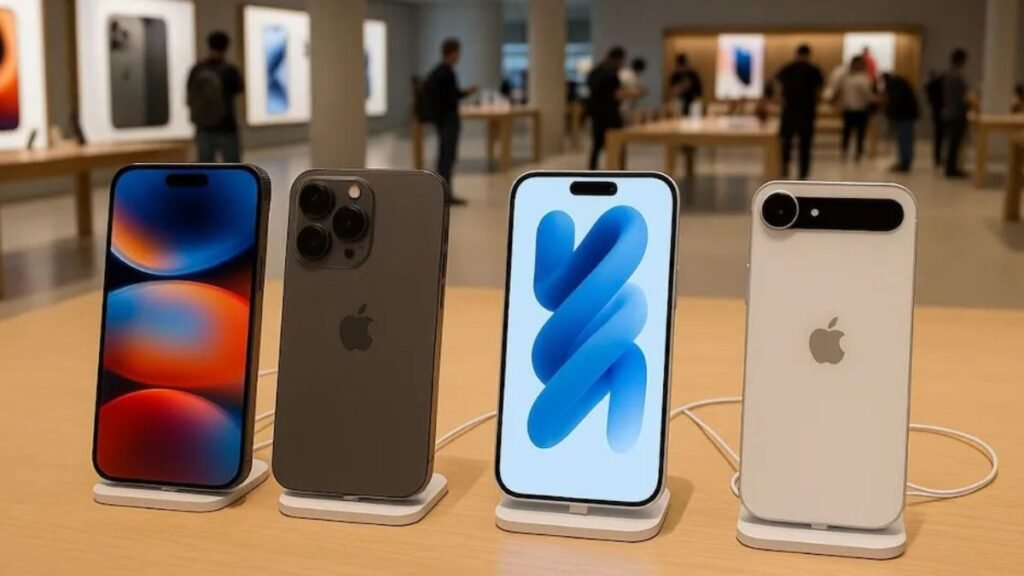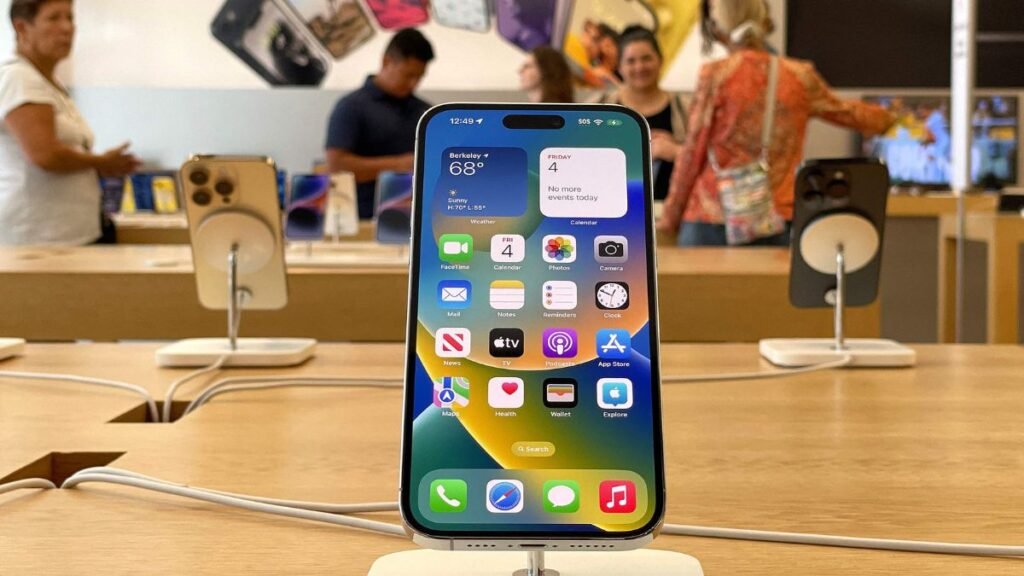Apple has once again taken the tech world by storm with the launch of its latest iPhone 17 series. Among the four models announced, iPhone 17, iPhone Air, iPhone 17 Pro, and iPhone 17 Pro Max, it is the iPhone Air that has captured the most attention. Designed as a replacement for the Plus model, the iPhone Air offers a thinner, lighter, and more stylish option for Apple enthusiasts who value design as much as performance.
While the iPhone 17 series introduces notable upgrades, it also arrives with higher price tags in India, largely due to the depreciation of the Indian Rupee against the U.S. Dollar. Despite local assembly, Indian buyers are seeing starting prices rise to unprecedented levels.
Rising Prices of the iPhone 17 Series in India

The iPhone 17 Air is positioned at a premium price of ₹1,19,900 for the base 256 GB variant. Meanwhile, the iPhone 17 Pro is priced at ₹1,34,900, and the flagship iPhone 17 Pro Max comes in at ₹1,49,900. Even the standard iPhone 17 starts at ₹82,900, highlighting how currency depreciation directly affects consumer costs.
During the iPhone 16 launch in 2024, the Rupee stood at around ₹84 per Dollar. Fast forward to 2025, and the exchange rate has climbed to ₹88, pushing up component costs and final retail pricing.
According to Tarun Pathak, Research Director at Counterpoint Research, the rising cost of imported components and global supply chain challenges are also major contributors. Still, Apple has managed to keep global prices relatively stable, reflecting its awareness of international economic uncertainties.
iPhone Air: Apple’s Bold New Design
One of the biggest highlights of this year’s launch is the iPhone Air. At just 5.6mm thin and weighing only 165 grams, it is the slimmest iPhone ever made. Apple is targeting users who crave novelty in design, offering them a fresh reason to upgrade from older models.
Unlike the Pro models that focus on advanced cameras and high-end performance, the iPhone Air is aimed at those who want a stylish and lightweight smartphone. However, the slim design does come with compromises — it features a single 48 MP rear camera and supports eSIM only, eliminating the physical SIM option.
Tech expert Faisal Kawoosa of Techarc noted that while slim phones are not new to the Android ecosystem, the iPhone Air brings that trend into Apple’s ecosystem, satisfying users who have long wanted a change in form factor.
Performance Powered by the A19 Pro Chipset
The iPhone 17 series debuts Apple’s A19 chip. While the standard iPhone 17 runs on the A19, the iPhone Air, Pro, and Pro Max all come equipped with the more powerful A19 Pro chipset. This ensures better efficiency, higher performance, and longer battery life – critical features for users who multitask heavily on their devices.
For those upgrading from earlier models like the iPhone 14 or 15, the performance boost is expected to be significant. Apple has also improved the selfie camera across all models, upgrading it to 18 MP, while the Pro models now feature triple 48 MP rear cameras.
Comparing Prices with the iPhone 16 Series
To put the price hikes into perspective, last year’s iPhone 16 Pro started at ₹1,19,900 for the 128 GB variant, and the iPhone 16 Pro Max launched at ₹1,44,900. With the iPhone Air now priced at ₹1,19,900 for 256 GB, Apple has not only increased the entry price point but also adjusted storage options to start at higher capacities.
Analyst Faisal Kawoosa emphasized that while the Rupee has depreciated by about 5% against the Dollar in the past year, Apple has raised prices by only about 3%. In his view, this shows that Apple is balancing global economic conditions with consumer expectations.
The Novelty Factor of iPhone Air
Apple has traditionally been known for groundbreaking innovations, but recent years have seen incremental upgrades instead of revolutionary changes. The introduction of the iPhone Air appears to be Apple’s attempt to inject novelty into its lineup.
Faisal Kawoosa noted that the iPhone Air offers something new to users who had grown accustomed to Apple’s familiar form factor. While Android brands like Samsung and Tecno have long experimented with slim designs, Apple’s entry into this segment may redefine consumer expectations.
Consumer Buying Trends in India
Despite the price hikes, Apple’s presence in India continues to grow. Research from Counterpoint shows that Apple holds a 7% market share by volume and an impressive 23% share by value. This suggests that while iPhones may not dominate in numbers, they lead in terms of revenue contribution.
Interestingly, around 60–65% of Indian iPhone buyers opt for EMI plans, which reduces the impact of higher upfront pricing. As a result, the iPhone Air and other models in the iPhone 17 lineup are expected to find strong demand among aspirational buyers.
Global Market Context
Apple’s pricing decisions also reflect global considerations. With international trade uncertainties and rising component costs, Apple has attempted to strike a balance. By keeping global prices steady while adjusting for local currency depreciation, the company aims to maintain its competitive edge worldwide.

Industry experts believe that the iPhone Air could give Apple an advantage in markets where consumers demand both innovation and style. The device’s slim profile, combined with Apple’s brand value, could make it a trendsetter in 2025.
Should You Buy the iPhone Air?
For existing iPhone users seeking a fresh design, the iPhone Air presents a compelling option. Its lightweight build and slim design make it highly attractive for those who prioritize aesthetics. However, users who demand cutting-edge camera technology or advanced multitasking features may prefer the Pro models.
Ultimately, the choice depends on whether you value novelty and style over raw power and versatility.

